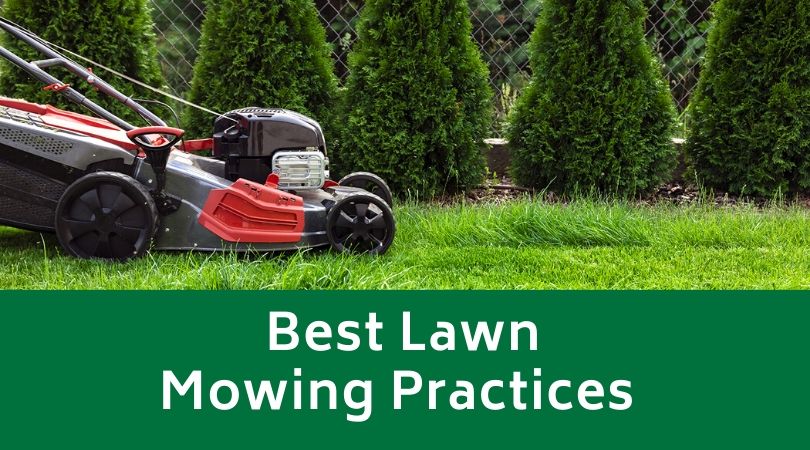
During the spring and summer months, it’s natural to spend more time mowing your lawn due to the warmer temperatures and longer days that encourage healthy grass growth. Keeping your lawn healthy is essential, but the best mowing practices help ensure your lawn looks the best it can from early spring until late autumn. We’ve rounded up the best lawn mowing practices you can adopt and use on your lawn below.
1. Pick Your Height Based on Your Grass Species
Did you know that different grass species have different growing heights? Your lawn mowing schedule will depend on your leaf blade size. Finer bladed grasses should get mowed shorter, and broadleaf grasses do better if you leave them slightly longer. St. Augustine grass does best when you leave it between 3.5 to 4 inches tall. If you have cool-season grass like Kentucky bluegrass, you should keep it around an inch tall. Take time to identify which grass you have and look for the cut height. This will help it thrive.
2. Have a Sharp Mower Blade
A dull mower blade will hack away at your lawn and leave it looking ragged and uneven. If you don’t install it properly, you’ll use the blunt edge as your cutting blade. You won’t be able to get a clean-cut, and it can injure your grass. If it does, this leaves areas for disease and insects to invade your grass and make it sick. You want to ensure you always use a sharp blade that you install correctly before you mow your lawn.
3. Mow Your Lawn at the Correct Intervals
You should mow your yard when it needs a trim, and you shouldn’t wait until it’s overgrown. If you heavily water or fertilize your lawn, or if it enters the active growing period, you may find yourself mowing up to twice a week. If it’s a drought or your grass is dormant, you might not have to mow at all. You never want to remove over one-third of your lawn’s leaf tissue at one time. So, if your desired height is around two inches, you have to wait until it’s three inches tall to cut it.
In the early spring, you may not need to mow your grass. However, you can still break your lawnmower out for those annual winter weeds. This can help keep the weeds down until you can apply herbicide.
4. Set the Correct Deck Height
Since you generally don’t want to remove more than one-third of the leaf tissue in one mowing session, it’s important to set your deck height. The lower you set it, the more frequently you’ll have to mow to keep it at your desired height without removing more than one-third of the tissue. There are usually more weed problems with shorter grass.
If you let your lawn grow too long and cut it back in huge portions, your grass can get very stressed. Stress makes grass pull nutrients up from the root system, and this will kill your grass. You’ll end up with a thin and unhealthy lawn.
Contact Evergreen Landscaping Today
Do you have questions about your lawn’s preferred height, species, and mowing practices? If so, you can reach out and contact our staff for assistance.

Thanks for posting about grass heights and the other tips. I’m always reading about cutting grass at the proper height, but nobody ever seems to give it in inches….again thanks.